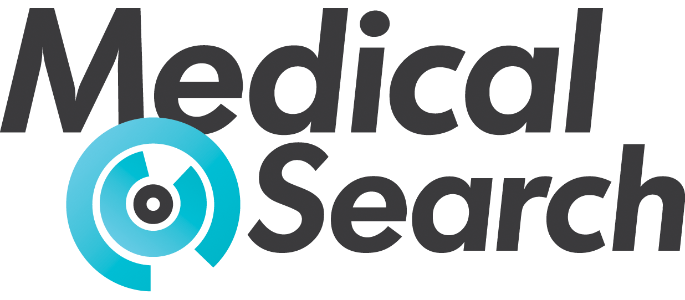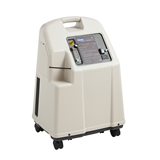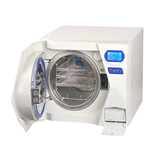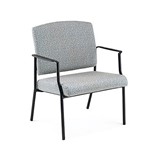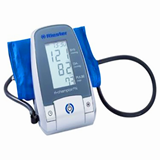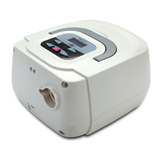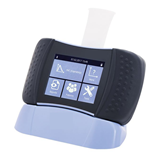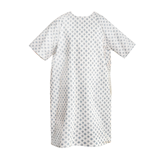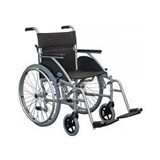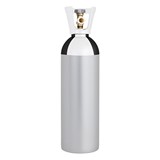Discover the best microdermabrasion machine prices, ROI, and expert tips for Australian clinics. Make informed buying decisions with our comprehensive guide.
Key takeaways
- Microdermabrasion machine prices in Australia range from $1,500 to $12,000, depending on brand, technology (crystal vs. diamond tip), and features.
- Entry-level machines for mobile therapists or small salons cost around $1,500–$3,000.
- Mid-range professional systems used in clinics typically range from $4,000–$7,000.
- High-end multi-function machines (often combined with oxygen infusion or LED) can reach $10,000–$12,000+.
- Annual maintenance costs average between $300 and $800, covering filters, tips, tubing, and calibration.
- Compliance in Australia involves operator training, infection control standards (per AS/NZS 4815), and proper registration if combined with therapeutic claims.
- Finance options are available for clinics, with repayments starting from $110/month for mid-tier systems.
Introduction
Microdermabrasion remains one of the most popular non-invasive skincare treatments in Australia. With over 100,000 treatments performed annually across clinics, salons, and medi-spas, investing in a professional-grade microdermabrasion machine can add significant value to your treatment offerings.
But with a saturated market of devices and features, how do you choose the right machine for your business—and your budget?
This detailed guide breaks down microdermabrasion machine prices, types, operations, and key buyer considerations so you can make an informed decision tailored to the Australian market.
Types of microdermabrasion machines
Understanding the two main types of technology is crucial to finding a system that aligns with your service offerings:
1. Diamond tip microdermabrasion machines
- Use synthetic diamond heads to exfoliate the skin.
- More common in Australian clinics due to reduced mess and lower consumable costs.
- Generally more durable and easier to sanitise.
Best for: Clinics seeking a hygienic, low-consumable treatment option.
2. Crystal microdermabrasion machines
- Use a stream of aluminium oxide or sodium bicarbonate crystals to exfoliate.
- Typically more aggressive; preferred for deeper resurfacing.
- Require regular replenishment of crystals and waste container disposal.
Best for: Salons that offer more intensive treatments or target thicker skin areas.
3. Multi-function systems
- Combine microdermabrasion with other treatments like oxygen therapy, ultrasonic infusion, or LED light therapy.
- Higher initial investment but offer expanded treatment menus.
Best for: Medi-spas and premium clinics looking to maximise device ROI.
Microdermabrasion machine prices in Australia
Microdermabrasion machine pricing varies based on brand, type, and included features:
- Entry-level (portable or basic diamond systems): $1,500–$3,000
- Great for mobile therapists and small salons.
- Mid-range (clinic-grade systems): $4,000–$7,000
- Reliable machines with precision tips, better suction control, and consistent performance.
- High-end/multi-modality: $8,000–$12,000+
- Premium systems often feature touch screens, pre-set protocols, and combination treatments.
How microdermabrasion machines operate
Most machines include the following core components:
- Control panel: Allows the operator to adjust suction power and duration.
- Handpiece: Attached with either a diamond tip or crystal nozzle.
- Suction motor: Creates vacuum pressure to lift dead skin.
- Filters/tubing: Collect debris and prevent contamination.
- Consumables: Crystals (if applicable), tips, and disinfectants.
Proper technique and operator training are key to consistent and safe outcomes.
Skin concerns best treated with microdermabrasion
Knowing what skin conditions respond best to microdermabrasion helps you market the service effectively and provide real client value:
- Dull, tired or rough skin – Enhances radiance and smoothness.
- Fine lines and superficial wrinkles – Stimulates collagen regeneration.
- Mild acne and blackheads – Clears congestion and improves skin clarity.
- Superficial pigmentation – Brightens uneven skin tone over time.
- Post-treatment maintenance – Ideal between peels or more intensive resurfacing treatments.
Clinical outcomes and patient satisfaction
- Treatment effectiveness: Microdermabrasion delivers noticeable improvements in skin texture, tone, and clarity, with results typically seen after just one session. Immediate effects often include smoother, brighter skin and reduced appearance of fine lines, age spots, and acne scars. For more stubborn skin issues, multiple treatments (4-6 sessions) may be required for optimal results, and long-term maintenance (every 1-3 months) is often recommended to sustain skin improvements.
- Skin types suitability: Microdermabrasion is generally suitable for all Fitzpatrick skin types, but it’s essential to adjust the machine settings for specific needs. Lighter skin types (I-III) tend to respond well to standard treatments. However, for darker skin types (IV-VI), caution should be used to prevent hyperpigmentation. Machines with adjustable suction power and treatment intensity provide more versatility to treat a wider range of skin concerns safely.
- Expected number of treatments: Most patients undergo a series of 4-6 treatments, spaced 2-4 weeks apart, for optimal results. The number of treatments may vary based on individual skin conditions, with maintenance sessions every 1-3 months to preserve the effects. The frequency of treatments depends on the machine’s intensity and the individual’s skin response.
Maintenance and consumables
Regular upkeep ensures machine longevity and patient safety.
Typical maintenance tasks:
- Diamond tip sanitisation: After every treatment.
- Filter replacement: Every 2–4 weeks depending on usage.
- Tubing inspection: Monthly for cracks or build-up.
- Crystal refills (if applicable): After every few treatments.
Annual costs:
- Diamond systems: ~$300–$500/year
- Crystal systems: ~$500–$800/year
Financing options in Australia
For many clinics, buying outright isn’t always feasible—especially if you’re scaling your treatment room quickly.
Popular finance options:
- Chattel mortgage: Own the machine from day one. Suits larger businesses.
- Lease-to-own: Spread payments over 12–36 months, with the option to buy.
- Rental/short-term leasing: Good for trialling or seasonal demand.
Typical repayments:
- $110–$180/month for mid-range systems
- $250–$400/month for multi-function machines
Warranties and support
Most Australian suppliers offer:
- 1-year manufacturer warranty (standard)
- 2–3 year extended warranties (available at an additional cost)
- Local servicing & tech support—vital for fast repairs
Ask whether loan units are provided if your machine is out for service.
Compliance and certification in Australia
While microdermabrasion machines are generally considered low-risk cosmetic devices, Australian clinic owners and equipment buyers still have legal and operational responsibilities to meet before offering treatments to clients.
Regulatory requirements
- TGA registration – Not typically required for basic microdermabrasion units unless the machine makes therapeutic or medical claims (e.g. acne treatment, scar revision).
- Multifunctional devices – Machines combining microdermabrasion with LED, radiofrequency (RF), ultrasound, or IPL may fall under TGA Class 1 or higher depending on usage. Confirm classification before purchase.
- Electrical safety compliance – Equipment must meet AS/NZS 60335.1 and display the Regulatory Compliance Mark (RCM) for use in Australia.
Operator and workplace compliance
- Professional training – All operators should complete certified training in dermal therapy or skin treatments (e.g. Diploma of Beauty Therapy or equivalent).
- Workplace Health & Safety (WHS) – All staff must follow Safe Work Australia guidelines, including proper PPE use, safe suction settings, and slip/fall prevention.
Infection control standards
- AS/NZS 4815 – Adhere to Australian Standard AS/NZS 4815 for cleaning and disinfecting any reusable equipment components (e.g. tips, tubing).
- Disposables and consumables – Ensure consumables like filters and single-use tips are changed between clients.
- Documented cleaning protocols – Maintain written infection control policies and train staff on daily cleaning routines
Frequently asked questions (FAQs)
1. What’s better: crystal or diamond microdermabrasion?
Diamond systems are generally preferred in Australia due to lower consumable costs, easier cleaning, and reduced environmental waste. However, crystal systems offer deeper exfoliation for more resilient skin types.
2. How often do the consumables need replacing?
- Diamond tips: Every 6–12 months, depending on usage and manufacturer.
- Filters: Every 2–4 weeks.
- Crystals: Replenish weekly in busy clinics.
3. Can I claim this machine as a business asset?
Yes. If you're purchasing through your clinic, microdermabrasion machines are a depreciable asset and often eligible for the instant asset write-off scheme (check latest ATO updates or speak with your accountant).
4. Is training included with the purchase?
Most reputable Australian suppliers provide on-site or virtual training as part of the package. Confirm if refresher training is included for new staff.
5. How do I know if a supplier is reputable?
Look for:
- Australian-based service centres
- Transparent warranty terms
- Google reviews or testimonials
- TGA information (if therapeutic claims are made)
Final thoughts
Investing in a microdermabrasion machine can elevate your skin clinic or beauty salon's treatment offering significantly. By understanding the pricing, types, upkeep, and compliance obligations in the Australian market, you're better equipped to make a smart, profitable decision.
Whether you're just starting out or upgrading your current system, always compare multiple models, confirm warranty and servicing support, and explore finance options that align with your cash flow goals.
